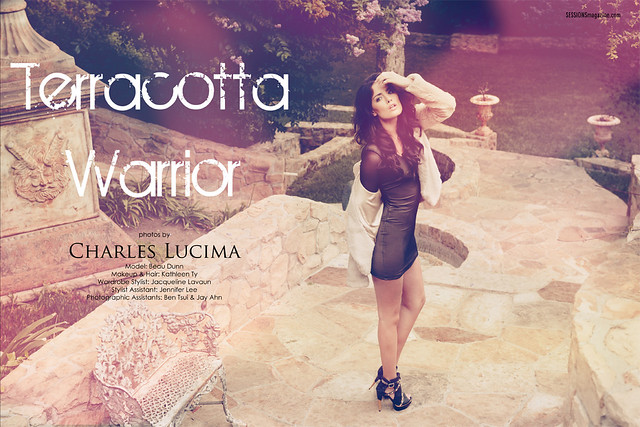
Natural Lighting Goodness with Beau Dunn
Here's some Q/A from a private workshop correspondence I've had with a photographer that I'm working with this Thursday. She had the following questions:
School does a great job teaching studio lighting. I'm proficient using Dynalite and ProFoto strobes. School does not, much to my dismay, teach lighting on location. Not only that, they don't demo on campus, outdoor lighting techniques. I'm weak and I really need to improve my outdoor lighting skills.
What I'm looking to learn from you during our session is:
1) Learn how to create emotionally charged images and learn how to capture the human element. How to direct models.
2) Learn how to use scrims. What/When determines assembling the scrim? When/Why over power the sun with strobes? When/Why shoot with and/or against the sun? And anything else, that you can think of that pertains to lighting/shooting fashion outdoors on location.
My response follows:
It sounds like you may already be reading my blog, but if you haven't seen this article, read this one that stemmed from a confused student about location lighting.
1. Learning how to direct models has more to do with knowing what you want out of the models than anything else. So a huge part of this is just having a lot of experience with models and a lot of time spent behind the lens. For me, I got better at directing once I got frustrated with what I was seeing on the computer. I remember getting upset at the photographer (me) when I saw 100 frames that were exactly the same pose and expression in Lightroom. I also remember getting mad at the photographer (me) when I saw the same 10 poses rinsed and repeated over and over again in Lightroom. I also remember getting mad at the photographer (again me) when I saw the same boring angles of the model without any variety.
They say, "Necessity is the mother of all invention". Well, I needed more out of my models. And I was the only one to blame. So really I needed more out of the photographer.
While I can't teach you experience or how to be frustrated, I can teach show a general guideline for directing models. I always start with a vision in my mind. That vision is usually driven by the fashion/wardrobe and the feel of the overall look. Ideally this is determined during pre-production as you sit down with your designer, stylist, client, art director, etc. Conceptual shoots shouldn't be executed on the photographer's whim.
But that being said, the photographer should have free reign to direct as long as it's within the framework of the concept. Wow, that sounds awesome. Let me say it again. The photographer should have free reign to direct as long as it's within the framework of the concept. That means that once the proper legwork is complete, the photographer should be able to shoot freely with the model on set. Given that the photographer knows the concept, details, and guidelines, he/she should be able to "jive" with the model and go with the flow. For all intents and purposes it's how actors perform. They memorize the lines, but when it's time to act, they let go of everything so they can just live in the moment. That way it's not "acting".
In much the same way, the photoshoot should be less of a shoot and more like a dance. An unchoreographed interpretive dance. But with certain terms and restrictions.
Of course being able to stay in the moment has much to do with how experienced you are on set with models, with lighting, and with the location. Again, I can't give you actual experience, but I can demonstrate how to attack this shoot. I'll show you what verbal commands, considerations, details, and expectations I have in real-time for any given shoot.
2. Light really is just light. Once you see light and understand how the sensor translates that light into a 2-dimensional digital image, you'll naturally ask for scrims. reflectors, ND or polarizing filters, strobes, etc. But even with understanding light, how you choose to light is and should be dependent on the concept of the images which should be highly if not totally dependent on the fashion of the shoot.
Because concept governs everything. Down to the pose. Down to the model choice. For example, you wouldn't use a bleached-blond, fake-tan, lifestyle/commercial model with a round face for a high fashion photoshoot. Why not? Because girls like that belong on the reality shows. Likewise, you wouldn't use soft blurry washed-out lifestyle-esque lighting for a gritty androgynous New York high fashion photoshoot. So it's a good rule to try and match the lighting (along with model choice, pose, post-processing, etc.) with the concept of the shoot.
And it's important to see and understand light. What I can show you is how the light interacts with the sensor. I can show you how to moderate that light with either diffusers, scrims, and reflectors. I can also show you how to shoot if you were to shoot against the sun and how to shoot if you were to use the sun. I can also show you how you'd use the strobes for main light or even rim lighting. With this understanding you'll have the knowledge to make educated decisions on any location shoot.

No comments:
Post a Comment